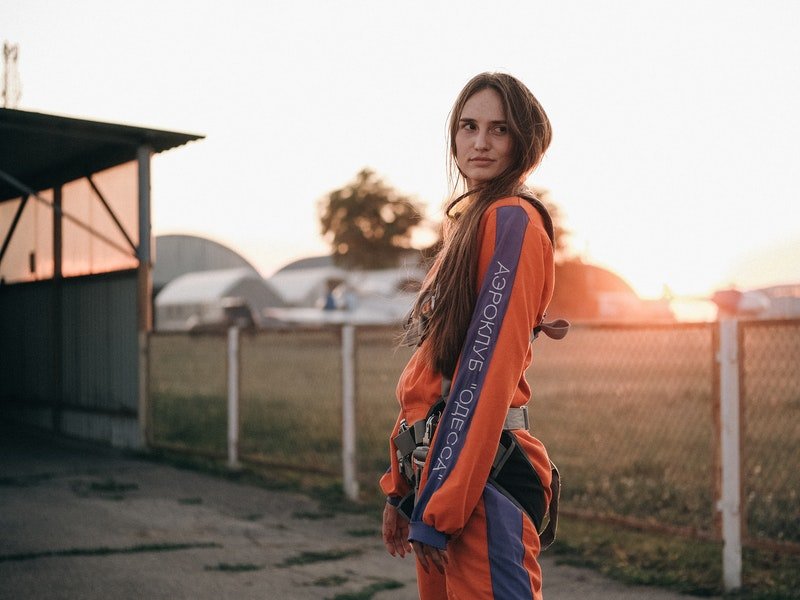It takes a lot to go skydiving. You’ll need to have the courage and determination to sign up for a skydiving course or tandem skydive, but courage and determination alone aren’t enough to get you into the sky and safely down again. You’ll also need lots of equipment. So what equipment is needed for skydiving?
From helmets and parachutes to your jumpsuit and navigational equipment, there’s a lot involved in a skydive/. If it’s your first jump, the dive school will have everything you need and talk you through it. However, once you get the skydiving bug, you’ll probably want to start buying some of your own equipment.
Let’s take a look at what equipment and clothing are needed to skydive. We will also look at the different types of equipment and costs involved.
What equipment do you need to skydive?

There’s a lot of equipment needed to ensure your skydive is safe and fun. Let’s talk through the critical pieces of skydiving equipment you’ll use:
Parachute rig: A parachute is a pretty valuable piece of equipment when skydiving! A parachute rig consists of 2 parachutes: the main parachute and the reserve. It’ll also have a set of handles and a container to pack it in. Most experienced skydivers will pack their own parachute, but a professional will pack it for you as a novice skydiver.
Helmet: Most accidents and injuries in skydiving are down to poor landings. A helmet is one of the essential pieces of equipment for a new solo skydiver. There are two kinds of skydiving helmets: soft helmets and hard helmets. As you master your craft, it’s safe to switch to softer and lighter helmets. It’s also worth noting that tandem skydive students don’t wear helmets because of their positioning. It’d be more dangerous if they hit the trainer in the head and knocked them unconscious!
Goggles: Another vital piece of equipment that mustn’t be overlooked. Falling at such high speeds would be very hard to see without them. If something were to hit you in the eye at that speed, it could lead to a severe injury.
Altimeter: As a novice skydiver, you’re going to be nervous about when to deploy your parachute. Pulling too early or too late can lead to dangerous situations, but that’s where an altimeter comes in. An altimeter gives you a precise reading of your altitude and lets you know the perfect time to pull.
Automatic Activation Device (AAD): Some skydive schools will also use an AAD with new students. This piece of skydiving equipment automatically deploys the parachute when you hit a set altitude.
What clothing equipment is needed for skydiving?

We’ve mentioned goggles and helmets, but what other pieces of clothing are needed for skydiving? Well, that depends a lot on the weather.
The standard piece of clothing a new skydiver will wear is a jumpsuit. Some more experienced skydivers will wear casual clothes, but you’ll probably be given a jumpsuit as a newbie. Jumpsuits are designed to protect you from the wind and cold air and also give you enough space and comfort to wear other clothes underneath,
A jumpsuit with shorts and a T-shirt underneath should be OK in the summer, but we suggest adding an extra layer, like a soft tracksuit. It may be over 70F on the ground, but when falling at your highest altitude, temperatures could still be in the 30s.
On a cold winter’s day, you need to be prepared for some icy air. It depends a lot on the place and local weather, but it’s not unusual for a winter skydiver to experience temperatures below 0F as the freefall at 6,000 feet and above. Due to the short time in the air, the cold isn’t dangerous, but you still want to wrap up warm to make sure you enjoy it.
For a winter skydiver, we recommend wearing thick and comfortable tracksuits and fleeces with thermals underneath. Your jumpsuit will also help to keep you warm, but these extra lays are necessary unless you’re one of those unique people that love feeling the cold. You’ll also want a good pair of gloves, as your hands will undoubtedly feel the chill.
Should you buy your own equipment for skydiving?

If you’re just starting out, it’s not wise to invest in your own equipment. You could spend on some suitable and comfortable clothing, but in general, skydiving equipment is expensive. As you work your way through your skydiving course and first 20+ dives, you’ll be fine using the equipment supplied by your school or trainer.
Once you’ve completed your introduction course and earned your A license, it may start to make sense to buy some of your own skydiving equipment.
The first pieces of equipment worth thinking about are your jumpsuit, goggles, and helmet. These items are reasonably affordable, especially if you buy secondhand. Having your own jumpsuit, goggles, and helmet means can give you the best fit and comfort. You could easily spend $2,000 plus on a top branded set of these items, but if you shop around or buy quality used items, you could budget about $500.
You may also be thinking about an altimeter and AAD. A good altimeter and AAD can easily cost $2,000. Buying secondhand, you can get these under $500. It’s worth considering, as you progress, you’ll start feeling more comfortable with altitude reading and rely on such items less and less.
When looking at the more significant equipment, such as your parachute canopy, reserve, and container, you need to figure out how man jumps you’ll do. A full rig can set you back anything from $6,000 to $9,000. Even when buying second hand you’d be lucky to get a decent rig under $4,500. If you’re planning on doing 200+ jumps and you appreciate the familiarity of having your rig, that’s understandable. But bear in mind that rig rental is around $25, and so every 100 jumps will cost you $2,500 in rental fees.

